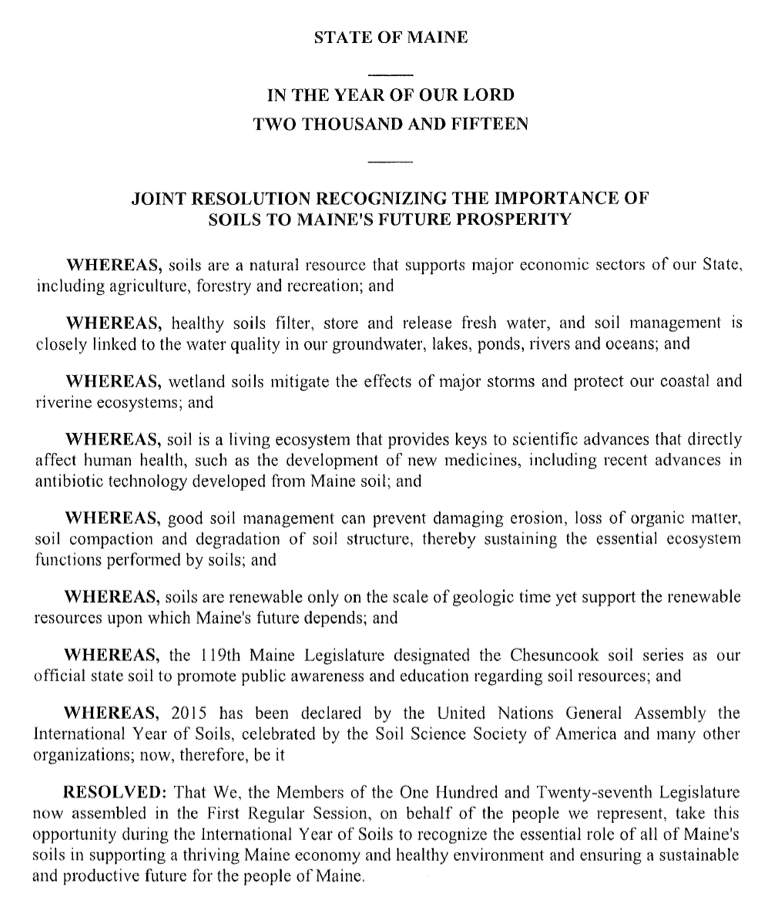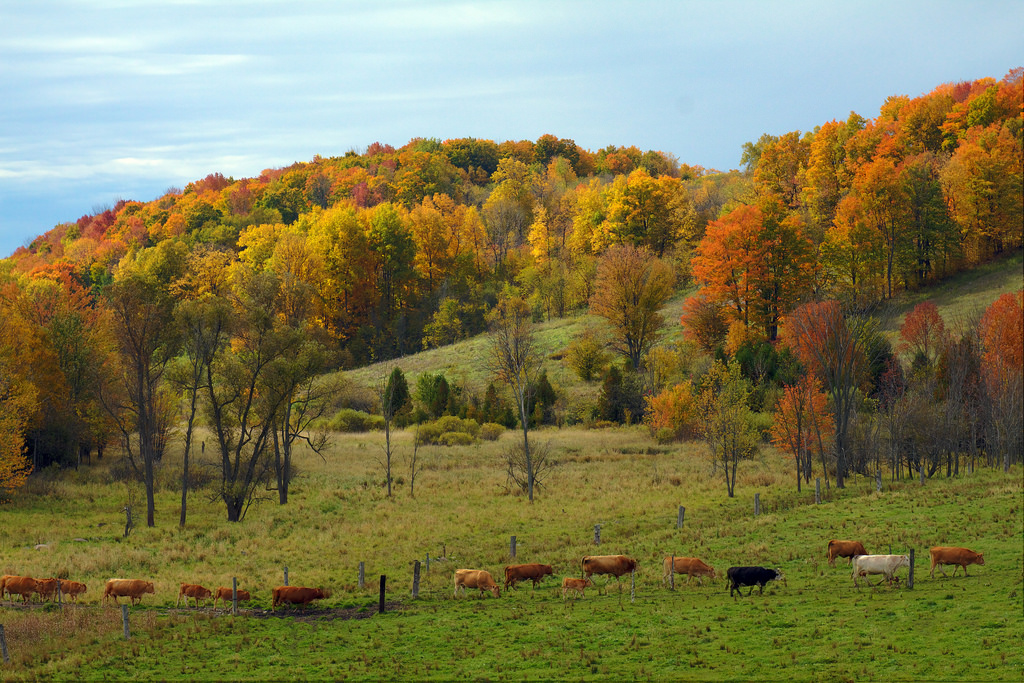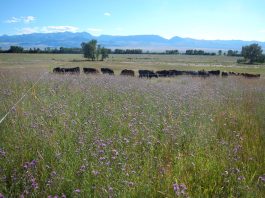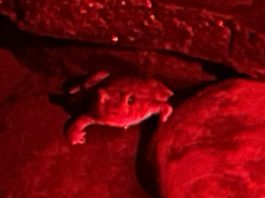The story goes that, backed by a group of dedicated soil scientists, a state delegate in Maryland first brought forward a bill in 2007 to make Sassafras the official state soil. Sassafras, a very deep Coastal Plain soil mapped on nearly 500,000 acres in Maryland, was one of the first soil series named in the United States. The bill stalled in the House. In 2010, they tried again. Some legislators chided that adopting an official state soil wouldn’t pass the laugh test, and it was voted down 18-4 in committee. I went to graduate school at the University of Maryland where I heard this story multiple times; strong feelings linger at the school that prides itself in world class soil judging.

In my home state of Maine, soil scientists who proposed Chesuncook as the official state soil in 1999 had better luck, though not without a fight.* Having to explain the importance of soils to those who find it laughable or perhaps just weird is the historical norm. I think this is changing. But I don’t think it’s changing fast enough, which is why I teamed up with some of those same Maine soil scientists and decided to go back to the Maine legislature to see if they would pass a joint resolution officially recognizing the vital role all soils in our state play for our future prosperity.
This wasn’t completely out of the blue. The UN declared 2015 the International Year of Soils (IYS), and I was wondering what could be done to raise the profile of soils (I can’t claim that pun, but I also can’t resist it). The first objective of IYS is to “raise full awareness among civil society and decision makers about the profound importance of soil for human life.” It will take a lot more than a resolution to raise full awareness among decision makers about what soils are, what they do, and why they are essential for human and environmental health, but it’s a start.
The resolution we drafted is as follows:

The US senate actually adopted a resolution recognizing “soil as an essential natural resource and soils professionals as playing a critical role in managing our nation’s soil resources” in 2008. We liked a lot of the language in it, but we didn’t want to draw attention to soil scientists—we wanted to draw attention to soil. We also wanted to make something that was specific to our unique state. Maine is blessed with tremendous natural resources and recreation opportunities in our abundant forests, lakes, rivers, ocean, and agricultural land. Soils support all of these, but are rarely included as a “natural resource” themselves. Nor are they often appreciated for their contributions to human health. Lucky for us, it was a Maine soil that recently provided the bacterium for a potentially revolutionary new method of treating infections, though soils have long been the source of discoveries, like streptomycin, that have extended millions of peoples lives.
To get this resolution to the legislature, I took the advice of a family friend and approached the House chair of the Environment and Natural Resources Committee. Maine has a relatively small population and a citizen legislature. Despite being extremely busy, legislators are accessible, and she was amenable to the idea. She was willing to take the resolution forward, gathering the necessary co-sponsors, and the resolution will be read by the clerk to the legislature this week.
 It is just as important to disseminate information about the resolution as it is to get it adopted. Not many people peruse the legislative record just for fun, and we don’t want this to be a token gesture. We want to raise awareness of the “profound importance of soil for human life.” It can be hard to turn this awareness into action, but I think changing awareness can change perception. Legislators may no longer find it laughable to have a state soil. Parents might realize that their children’s love of playing in the “dirt” can be channeled into a valuable environmental career. The public might appreciate farmers and foresters as stewards of one of our most precious natural resources. With increased awareness, appreciation, and understanding, maybe we’ll have enough human capital invested in soil that we can ensure a resilient future. And maybe people will stop calling it “dirt.”
It is just as important to disseminate information about the resolution as it is to get it adopted. Not many people peruse the legislative record just for fun, and we don’t want this to be a token gesture. We want to raise awareness of the “profound importance of soil for human life.” It can be hard to turn this awareness into action, but I think changing awareness can change perception. Legislators may no longer find it laughable to have a state soil. Parents might realize that their children’s love of playing in the “dirt” can be channeled into a valuable environmental career. The public might appreciate farmers and foresters as stewards of one of our most precious natural resources. With increased awareness, appreciation, and understanding, maybe we’ll have enough human capital invested in soil that we can ensure a resilient future. And maybe people will stop calling it “dirt.”
If you’d like to get a similar resolution passed by your state legislature, On Pasture would like to help you organize! Feel free to get started in your state, but when you do, just drop us a line with your contact information and the state you are in. If anyone else wants to join you, we’ll send them your way!
* To-date, 20 states have legislatively established state soils. The remaining states have state soils that are not legislatively established.





Got here from Ray Weil email to the Soil Education and Outreach Division. Great step to rise awareness.
Nice work, Natalie. New York State, coming up…
Great for New York! Good luck!
Comments are closed.